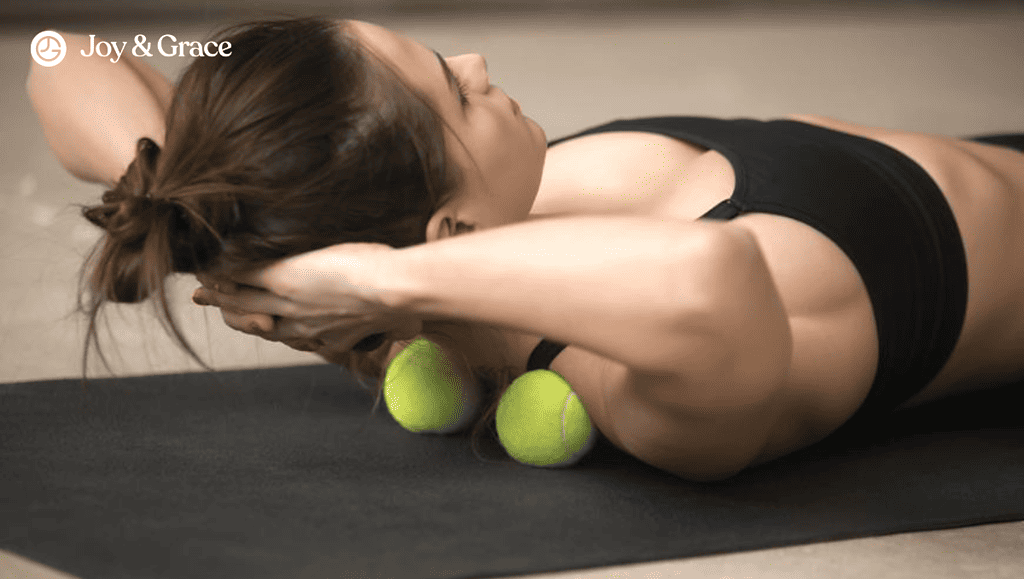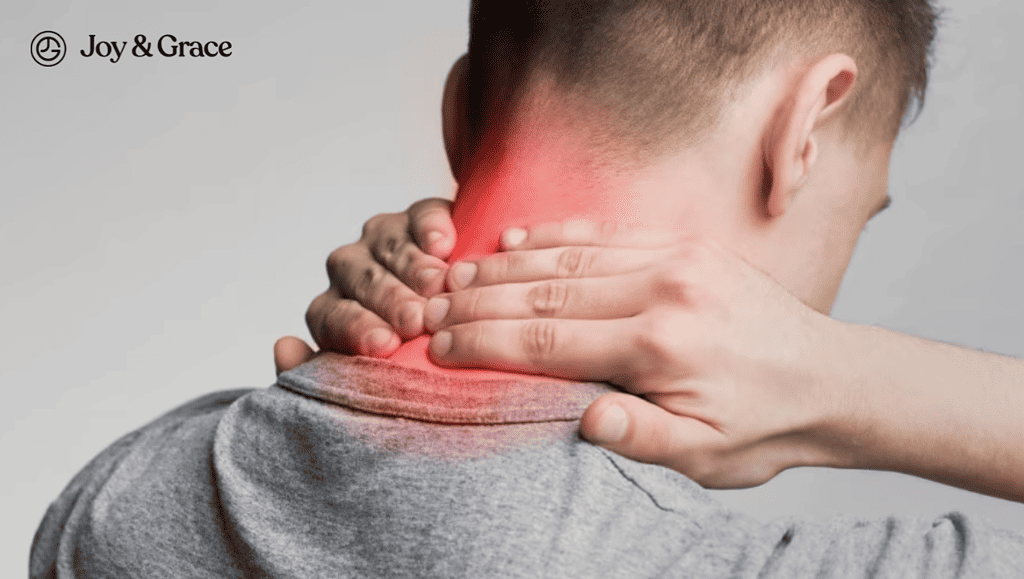If you’ve been dealing with neck pain, we’re pretty sure you’ve considered going to the nearest massage therapist to get some quick relief. Well, it seems like relief may be found in something inexpensive and readily available.
We know that neck pain can be a real pain in the...neck. It can make it hard to focus at work, enjoy your favorite activities, and even get a good night's sleep. But what if we told you that something as simple as a tennis ball could be the key to relieving your neck pain?
In this article, we talk about how a tennis ball can help deal with your neck pain and two simple ways you can use them.
Can A Tennis Ball Help With Neck Pain?
When you’re stuck hunching over your desk for most of the day, there’s a good chance that your neck muscles may be tense. And in case you didn’t know, tense neck muscles equal a literal pain in the neck. Tennis balls help relieve this through a mechanism called myofascial release.
Our muscles are surrounded by a thin layer of tissue called fascia. The fascia can be responsible for the pain and tightness you feel when your muscles are tense. Myofascial release is a form of manual therapy that aims to relieve tension in the fascia.
Myofascial release involves applying pressure to points in the muscles called trigger points. This results in the release of tension and knots.
In one study, there was an improvement in patients’ neck pain after doing myofascial release for 4 weeks. Myofascial release may also help with chronic mechanical neck pain.
Using a tennis ball for self-massage can be considered a form of myofascial release. It allows you to apply pressure to specific points in the neck muscles and provide relief from pain.
Is A Tennis Ball As Good As A Massage Ball?
A tennis ball and a massage ball are both useful tools for self-massage and myofascial release, but they have some differences.
Think of a tennis ball as your budget-friendly masseuse. It's soft and provides a moderate amount of pressure, perfect for beginners or people with sensitive muscles. It's inexpensive and widely available. You can find it in your local sports store, in your kid's room, or even at a local park! But we probably don’t recommend using the icky ball from the park.
A massage ball, on the other hand, is like a professional masseuse. It's specifically designed for self-massage and myofascial release. It is usually made of specialized materials that allow for deeper pressure and targeted release of muscle tension. Plus, they come in different sizes and shapes. Some even have knobs or ridges to create different pressure points.
Either way, tennis and massage balls can be effective tools for self-massage and myofascial release. So, whether you're on a budget or looking for something more targeted, you can't go wrong with either one.
How Do I Use A Tennis Ball On My Neck?
Ready to give your neck some TLC with a tennis ball? Here's how you can do it in two fun and easy ways:
- Use your hands to feel for tight or painful spots in your muscles. These areas are commonly referred to as "trigger points."
- Position the tennis ball on top of the trigger point and apply gentle pressure.
- Slowly move the tennis ball around the trigger point, applying pressure to different spots within the area. This will help to release the tension in the fascia.
- Hold the pressure on the trigger point for 30 seconds to 2 minutes, depending on your comfort level.
- Repeat the process on other trigger points as needed.
- Grab a tennis ball and place them inside a snug or tightly tied sock. This will keep the tennis ball in place and prevent it from moving around while using them.
- Find a comfortable spot on the floor or against a wall.
- Position yourself so that the ball is against the area of your neck where you're feeling tension or pain.
- Now, gently press your neck against the ball and use your body weight to apply pressure to the affected area.
- Slowly roll the ball around, massaging the muscles and searching for any knots or trigger points.
- If you find a particularly sensitive spot, you can linger on it for a bit longer, but don't overdo it!
- Repeat the process on different areas of your neck as needed.
And remember, listen to your body; if it hurts, stop and take a break. Also, remember to vary the ball's position and yourself. You can try lying down with the ball under your neck, sitting on a chair, and using the ball against the wall. Experiment with different positions and techniques to find what works best for you.
Takeaway
If you're suffering from neck pain, using a tennis ball can be a simple and effective way to alleviate discomfort and improve mobility. Applying gentle pressure on the neck muscles with a tennis ball can help release tension and restore optimal function.
Remember to take it slow and listen to your body, as myofascial release can be intense. Incorporating myofascial release with a tennis ball into your daily routine can help to improve your neck pain and overall well-being.
Don't let neck pain slow you down! Want to learn more about other effective ways to relieve pain? Subscribe to our blog newsletter today!















